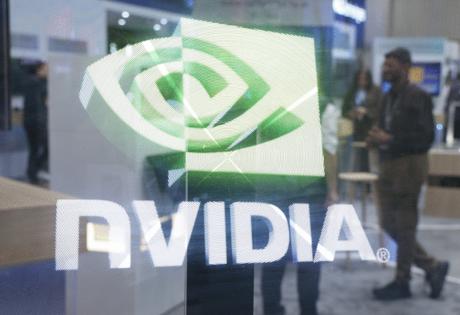S&P 500 rises to record as Treasury sale goes well: Markets wrap
Published in News & Features
Relative calm enveloped Wall Street, with stocks rising as traders parsed a batch of corporate outlooks. Treasuries bounced from session lows as a $22 billion sale of 30-year bonds showed appetite for longer-term debt despite concerns about the U.S. deficit and the impacts of tariffs.
Just a few days ahead of the unofficial start of the earnings season that will bring results from big banks, an upbeat forecast from Delta Air Lines Inc. lifted the industry. The S&P 500 hit a record, approaching 6,300. Tesla Inc. jumped on plans to expand its Robotaxi service to California and Arizona. Nvidia Corp.’s value topped $4 trillion. The chipmaker’s chief Jensen Huang was said to meet with President Donald Trump before a planned trip to China.
Treasury 10-year yields rose one basis point to 4.34%, while those on 30-year bonds were little changed at 4.86%. Thursday’s debt auction was awarded at 4.889% vs a 4.890% when-issued yield at the 1 p.m. New York time bidding deadline. A drop in jobless claims in a period that included the Independence Day holiday was taken in stride. The dollar wavered.
Markets are caught up in a mix of sometimes contradictory risks surrounding tariffs, fiscal policy and the Federal Reserve outlook. Trump’s flurry of new warnings have done little to rattle trading as they did when the “reciprocal tariffs” were announced in April, with investors focusing on the overall extension of the deadline to Aug. 1.
Speaking in Dublin, JPMorgan Chase & Co.’s chief Jamie Dimon warned markets are complacent on tariffs. He also said it is important that an agreement is reached between the European Union and the U.S., adding that a tariff framework “needs to get done.”
“There’s zero chance we’ll have tariff clarity by Aug. 1, which makes a July rate cut impossible,” said Tom Essaye of The Sevens Report. “The practical impact of this consistently delayed tariff policy is to reduce the chances of a September rate cut, which could leave rates higher for longer and increase the chances of an economic slowdown.”
Fed Bank of St. Louis President Alberto Musalem said he sees upside risks to inflation, but it’s too early to know whether tariffs will have a persistent impact on prices. His San Francisco counterpart Mary Daly said she still views two rate cuts as likely this year and sees a greater chance that the price effects from tariffs may be more muted than anticipated.
Policymakers have held borrowing costs steady this year, but a divide has emerged over how many rate cuts officials expect in 2025. Fed officials will meet next July 29-30. Based on pricing in futures contracts, traders currently expect the central bank to slash rates twice this year.
“While there will likely be no shortage of announcements coming out of the White House in the coming weeks, it’s unlikely the new August 1 deadline will be the end of the tariff story,” said Daniel Skelly, head of Morgan Stanley’s Wealth Management Market Research & Strategy Team.
And with a new earnings season around the corner, investors may want to focus on stocks with the potential for upside surprises in profits and cash flow, while also diversifying into international stocks, commodities, energy infrastructure, and hedge funds, he noted.
“More tariff clarity should emerge as trade talks continue,” said Mark Haefele at UBS Global Wealth Management. “Declines in policy uncertainty have historically been positive for stocks, and we think U.S. trade policy will move toward greater stability in the second half of the year.”
“The remarkable resilience of the U.S. consumer — and in turn U.S. companies — was the hero of the first half,” said Kristy Akullian, head of iShares Investment Strategy, Americas. “Going into Q2 earnings season, stocks could get an added boost from low expectations.”
Wall Street expects very little from S&P 500 companies this earnings season, forecasting just 2% growth and a margin dip for the second quarter, according to Bloomberg Intelligence’s Gina Martin Adams and Wendy Soong.
“While it’s a very low bar — indeed, the weakest growth in two years — the market may still need confirmation that profit momentum will only get better in the second half,” they said. “Our guidance model suggests earnings should easily clear consensus, reinforcing the case for a recovery narrative to take hold.”
Risk assets are set to remain supported, with lower sensitivity to tariffs and the second-quarter reporting season as key catalysts, HSBC strategists led by Max Kettner said. They recommended increasing the overweight to equities further, now with a preference for the U.S.
“Aside from still supportive investor positioning, we think the bearish narrative on the Q2 reporting season is misplaced,” they said. “The weaker USD, improved company guidance, and low expectations are more than sufficient for positive surprises. Following this week’s renewed tariff announcements, any cuts to these rates would likely be taken as positive too.”
A noticeable shift has been reshaping U.S. equities in the month of July: Some of the biggest laggards from the first half are now outperforming, while the year’s early winners are falling out of favor.
Investors are taking profits and pivoting into underperforming sectors, fueling a reversal that’s turned energy — one of the biggest losers in the S&P 500 Index in the first six months of the year — into July’s top gainer, according to data compiled by Bloomberg. Meanwhile, communication services has swung from second-best gainer in the first half to the worst performer this month.
Investors should stay away from a one-sided allocation to either defensive or cyclical stocks, according to Goldman Sachs Group Inc. strategists including Ryan Hammond.
“While the overall technical trend remains positive for U.S. equities, our proprietary cycle analysis currently implies a window of potential volatility to open beginning in late-July and lasting into October,” said Dan Wantrobski at Janney Montgomery Scott.
Wantrobski also noted that bullish sentiment and positioning are elevated, charts are overbought, seasonality looms ahead in the coming weeks, and headline risk remains high in this environment.
“It’s been a steady climb, with several tailwinds lifting sentiment along the way,” said Fawad Razaqzada at City Index and Forex.com. “But with uncertainty over the U.S. trade policy lingering, the U.S. markets are in need of a fresh catalyst for the next leg up, you’d feel.”
Consequently, Razaqzada says investors shouldn’t be surprised if we see a bit of consolidation or a retracement from fresh highs.
Corporate highlights
—Tesla Inc. will hold its annual shareholder meeting Nov. 6, the company said in a new filing with the Securities and Exchange Commission.Elon Musk said his AI startup’s chatbot will be coming to Tesla vehicles.
—Apple Inc. is planning an ambitious pipeline of new products for release during the first half of 2026, including a new low-end iPhone, multiple iPads and upgraded Macs.
—Delta Air Lines Inc. reinstated a profit outlook for the year and said travelers are coming back, prompting its stock to surge amid a fresh sense of confidence in the beaten-down U.S. consumer.
—Conagra Brands Inc. pointed to rising costs from U.S. tariffs as the packaged food company forecast profit for this fiscal year below Wall Street’s expectations.
—Levi Strauss & Co. raised its revenue outlook, with the maker of 501 jeans expecting sales growth to outweigh the impact of President Donald Trump’s tariffs.
—Ralph Lauren Corp. Chief Executive Officer Patrice Louvet said demand for its signature clothing such as cable-knit sweaters remains strong, even as the fashion industry is buffeted by tariffs and an economic slowdown.
—Helen of Troy Ltd. tumbled after the consumer-products company reported net sales for the first quarter that missed the average analyst estimate, and issued a weaker-than-expected forecast for the second quarter.
—Ferrero International SA agreed to acquire WK Kellogg Co. for an enterprise value of $3.1 billion, pushing the Italian family-owned candy business further into the lucrative U.S. market.
—U.S. regulators approved Moderna Inc.’s Covid vaccine for children, but for a narrower group than before.
—Autodesk Inc. is weighing an acquisition of rival engineering-software provider PTC Inc., according to people familiar with the matter.
—Taiwan Semiconductor Manufacturing Co.’s revenue rose a better-than-anticipated 39% in the June quarter, buoying expectations for a sustained post-ChatGPT boom in AI spending.
Some of the main moves in markets:
Stocks
—The S&P 500 rose 0.3% as of 4 p.m. New York time
—The Nasdaq 100 fell 0.2%
—The Dow Jones Industrial Average rose 0.4%
—The MSCI World Index rose 0.2%
—Bloomberg Magnificent 7 Total Return Index rose 0.6%
—The Russell 2000 Index rose 0.5%
Currencies
—The Bloomberg Dollar Spot Index was little changed
—The euro fell 0.2% to $1.1695
—The British pound was little changed at $1.3576
—The Japanese yen was little changed at 146.25 per dollar
Cryptocurrencies
—Bitcoin rose 2.4% to $113,381.15
—Ether rose 2.9% to $2,817.59
Bonds
—The yield on 10-year Treasuries advanced one basis point to 4.34%
—Germany’s 10-year yield advanced three basis points to 2.70%
—Britain’s 10-year yield declined two basis points to 4.60%
—The yield on 30-year Treasuries was little changed at 4.86%
Commodities
—West Texas Intermediate crude fell 2.2% to $66.88 a barrel
—Spot gold rose 0.3% to $3,324.63 an ounce
©2025 Bloomberg L.P. Visit bloomberg.com. Distributed by Tribune Content Agency, LLC.







Comments